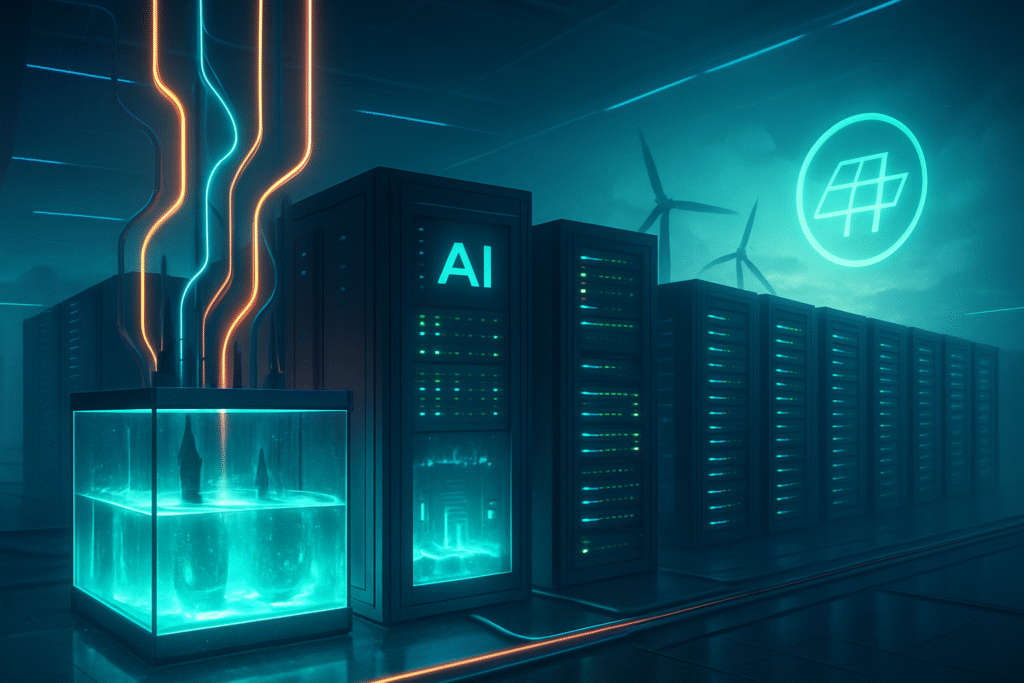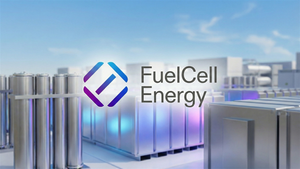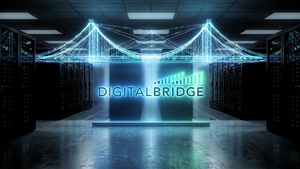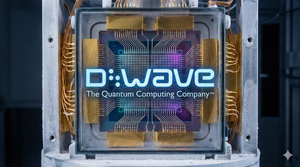
The relentless march of artificial intelligence continues to reshape the global technology landscape, with recent developments signaling a critical pivot towards robust and sustainable infrastructure to support its insatiable energy demands. As of October 17, 2025, a landmark $5 billion pact between Brookfield Asset Management and Bloom Energy, JPMorgan's evolving insights into AI stock valuations, and the emergence of Maine's first AI-focused data center collectively underscore a burgeoning era where the backbone of AI—its power and physical infrastructure—is becoming as crucial as the algorithms themselves. These advancements highlight a strategic industry shift, with massive capital flowing into innovative energy solutions and specialized data centers, setting the stage for the next phase of AI's exponential growth.
Powering the Future: Technical Innovations and Strategic Investments
The recent developments in AI infrastructure are not merely about scale; they are about innovative solutions to unprecedented challenges. At the forefront is the monumental $5 billion partnership between Brookfield Asset Management (NYSE: BAM) and Bloom Energy (NYSE: BE). Announced between October 13-15, 2025, this collaboration marks Brookfield's inaugural investment under its dedicated AI Infrastructure strategy, positioning Bloom Energy as the preferred on-site power provider for Brookfield's extensive global AI data center developments. Bloom's solid oxide fuel cell systems offer a decentralized, scalable, and cleaner alternative to traditional grid power, capable of running on natural gas, biogas, or hydrogen. This approach is a significant departure from relying solely on strained legacy grids, providing rapidly deployable power that can mitigate the risk of power shortages and reduce the carbon footprint of AI operations. The first European site under this partnership is anticipated before year-end, signaling a rapid global rollout.
Concurrently, JPMorgan Chase & Co. (NYSE: JPM) has offered evolving insights into the AI investment landscape, suggesting a potential shift in the "AI trade" for 2025. While AI remains a primary driver of market performance, accounting for a significant portion of the S&P 500's gains, JPMorgan's analysis points towards a pivot from pure infrastructure plays like NVIDIA Corporation (NASDAQ: NVDA) to companies actively monetizing AI technologies, such as Amazon.com, Inc. (NASDAQ: AMZN), Meta Platforms, Inc. (NASDAQ: META), Alphabet Inc. (NASDAQ: GOOGL), and Spotify Technology S.A. (NYSE: SPOT). This indicates a maturing market where the focus is broadening from the foundational build-out to tangible revenue generation from AI applications. However, the bank also emphasizes the robust fundamentals of "picks and shovels" plays—semiconductor firms, cloud providers, and data center operators—as sectors poised for continued strong performance, underscoring the ongoing need for robust infrastructure.
Further illustrating this drive for innovative infrastructure is Maine's entry into the AI data center arena with the Loring LiquidCool Data Center. Located at the former Loring Air Force Base in Limestone, Aroostook County, this facility is set to become operational in approximately six months. What sets it apart is its adoption of "immersion cooling" technology, developed by Minnesota-based LiquidCool Solutions. This technique involves submerging electronic components in a dielectric liquid, effectively eliminating the need for water-intensive cooling systems and potentially reducing energy consumption by up to 40%. This is a critical advancement, addressing both the environmental impact and operational costs associated with traditional air-cooled data centers. Maine's cool climate and existing robust fiber optic and power infrastructure at the former military base make it an ideal location for such an energy-intensive, yet efficient, facility, marking a sustainable blueprint for future AI infrastructure development.
Reshaping the AI Competitive Landscape
These infrastructure and energy developments are poised to profoundly impact AI companies, tech giants, and startups alike, redrawing competitive lines and fostering new strategic advantages. Companies like Bloom Energy (NYSE: BE) stand to benefit immensely from partnerships like the one with Brookfield, securing significant revenue streams and establishing their technology as a standard for future AI data center power. This positions them as critical enablers for the entire AI ecosystem. Similarly, Brookfield Asset Management (NYSE: BAM) solidifies its role as a key infrastructure investor, strategically placing capital in the foundational elements of AI's growth, which could yield substantial long-term returns.
For major AI labs and tech companies, the availability of reliable, scalable, and increasingly sustainable power solutions is a game-changer. Tech giants like Microsoft Corporation (NASDAQ: MSFT), Google (NASDAQ: GOOGL), and Amazon (NASDAQ: AMZN), which operate vast cloud infrastructures, face immense pressure to meet the escalating energy demands of their AI workloads. Partnerships like Brookfield-Bloom offer a template for securing future power needs, potentially reducing operational expenditures and improving their environmental profiles, which are increasingly scrutinized by investors and regulators. This could lead to a competitive advantage for those who adopt these advanced power solutions early, allowing them to scale their AI capabilities more rapidly and sustainably.
Startups and smaller AI firms also stand to gain, albeit indirectly. As the cost and availability of specialized data center infrastructure improve, it could democratize access to high-performance computing necessary for AI development and deployment. The Loring LiquidCool Data Center in Maine, with its focus on efficiency, exemplifies how localized, specialized facilities can emerge, potentially offering more cost-effective or environmentally friendly options for smaller players. However, the immense capital expenditure required for AI data centers, even with aggressive forecasts from industry leaders like NVIDIA's Jensen Huang, remains a barrier. JPMorgan's analysis suggests that this is financially achievable through internal funds, private equity, and external financing, indicating a robust investment environment that will continue to favor well-capitalized entities or those with strong financial backing.
The Broader AI Landscape: Sustainability and Scalability Imperatives
These recent developments in AI infrastructure and energy are not isolated events but rather critical responses to overarching trends within the broader AI landscape. The exponential growth of AI models, particularly large language models (LLMs), has brought to the forefront the unprecedented energy consumption and environmental impact of this technology. The Brookfield-Bloom Energy pact and the Loring LiquidCool Data Center represent significant strides towards addressing these concerns, pushing the industry towards more sustainable and scalable solutions. They highlight a crucial shift from simply building more data centers to building smarter, more efficient, and environmentally conscious ones.
The emphasis on decentralized and cleaner power, as exemplified by Bloom Energy's fuel cells, directly counters the growing strain on traditional power grids. As JPMorgan's global head of sustainable solutions points out, the U.S.'s capacity to meet escalating energy demands from AI, data centers, and other electrified sectors is a significant concern. The integration of renewable energy sources like wind and solar, or advanced fuel cell technologies, is becoming essential to prevent power shortages and rising energy costs, which could otherwise stifle AI innovation. This focus on energy independence and efficiency is a direct comparison to previous AI milestones, where the focus was primarily on algorithmic breakthroughs and computational power, often without fully considering the underlying infrastructure's environmental footprint.
However, these advancements also come with potential concerns. While the solutions are promising, the sheer scale of AI's energy needs means that even highly efficient technologies will require substantial resources. The risk of a "serious market correction" in AI stock valuations, as noted by JPMorgan, also looms, reminiscent of past technology bubbles. While today's AI leaders are generally profitable and cash-rich, the immense capital expenditure required for infrastructure could still lead to market volatility if returns don't materialize as quickly as anticipated. The challenge lies in balancing rapid deployment with long-term sustainability and economic viability, ensuring that the infrastructure build-out can keep pace with AI's evolving demands without creating new environmental or economic bottlenecks.
The Horizon: Future Developments and Emerging Applications
Looking ahead, these foundational shifts in AI infrastructure and energy promise a wave of near-term and long-term developments. In the near term, we can expect to see rapid deployment of fuel cell-powered data centers globally, following the Brookfield-Bloom Energy blueprint. The successful launch of the first European site under this partnership will likely accelerate similar initiatives in other regions, establishing a new standard for on-site, clean power for AI workloads. Simultaneously, immersion cooling technologies, like those employed at the Loring LiquidCool Data Center, are likely to gain broader adoption as data center operators prioritize energy efficiency and reduced water consumption. This will drive innovation in liquid coolants and hardware designed for such environments.
In the long term, these developments pave the way for entirely new applications and use cases. The availability of more reliable, distributed, and sustainable power could enable the deployment of AI at the edge on an unprecedented scale, powering smart cities, autonomous vehicles, and advanced robotics with localized, high-performance computing. We might see the emergence of "AI energy grids" where data centers not only consume power but also generate and contribute to local energy ecosystems, especially if they are powered by renewable sources or advanced fuel cells capable of grid-balancing services. Experts predict a future where AI infrastructure is seamlessly integrated with renewable energy production, creating a more resilient and sustainable digital economy.
However, several challenges need to be addressed. The supply chain for advanced fuel cell components, specialized dielectric liquids, and high-density computing hardware will need to scale significantly. Regulatory frameworks will also need to adapt to support decentralized power generation and innovative data center designs. Furthermore, the ethical implications of AI's growing energy footprint will continue to be a topic of debate, pushing for even greater transparency and accountability in energy consumption reporting. The next few years will be crucial in demonstrating the scalability and long-term economic viability of these new infrastructure paradigms, as the world watches how these innovations will support the ever-expanding capabilities of artificial intelligence.
A New Era of Sustainable AI Infrastructure
The recent confluence of events—the Brookfield and Bloom Energy $5 billion pact, JPMorgan's nuanced AI stock estimates, and the pioneering Loring LiquidCool Data Center in Maine—marks a pivotal moment in the history of artificial intelligence. These developments collectively underscore a critical and irreversible shift towards building a robust, sustainable, and energy-efficient foundation for AI's future. The era of simply adding more servers to existing grids is giving way to a more sophisticated approach, where energy generation, cooling, and data center design are meticulously integrated to meet the unprecedented demands of advanced AI.
The significance of these developments cannot be overstated. They signal a maturing AI industry that is proactively addressing its environmental impact and operational challenges. The strategic infusion of capital into clean energy solutions for data centers and the adoption of cutting-edge cooling technologies are not just technical upgrades; they are foundational changes that will enable AI to scale responsibly. While JPMorgan's warnings about potential market corrections serve as a healthy reminder of past tech cycles, the underlying investments in tangible, high-demand infrastructure suggest a more resilient growth trajectory for the AI sector, supported by profitable and cash-rich companies.
What to watch for in the coming weeks and months will be the tangible progress of these initiatives: the announcement of the first European Brookfield-Bloom Energy data center, the operational launch of the Loring LiquidCool Data Center, and how these models influence other major players in the tech industry. The long-term impact will be a more distributed, energy-independent, and environmentally conscious AI ecosystem, capable of powering the next generation of intelligent applications without compromising global sustainability goals. This is not just about computing power; it's about powering the future responsibly.
This content is intended for informational purposes only and represents analysis of current AI developments.
TokenRing AI delivers enterprise-grade solutions for multi-agent AI workflow orchestration, AI-powered development tools, and seamless remote collaboration platforms.
For more information, visit https://www.tokenring.ai/.






